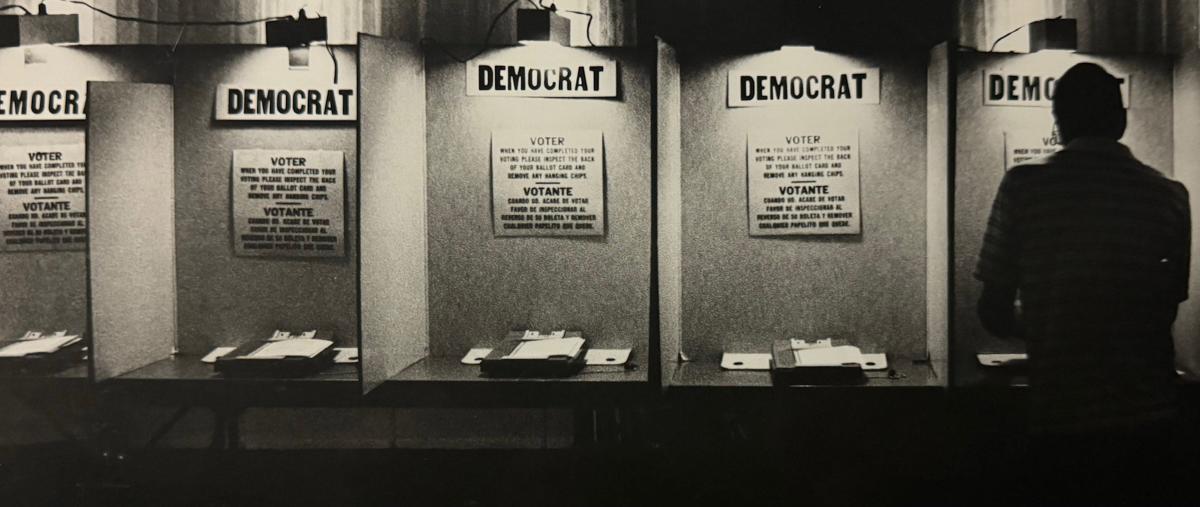From barely making a difference on presidential ballots to becoming one of the nation’s key swing states, Arizona has had an increasingly important role in presidential elections.
Over the years, the state has been involved in some key elections — both presidential and statewide.
This year’s election on Nov. 5 is no different. Given Arizona’s battleground status, the Grand Canyon State will likely have a national impact on the election.
That’s a lot of power in the hands of Arizona voters, but they’ve been here before. Here is a brief history of Arizona elections, which could explain how Arizona has become such a political powerhouse.
Arizona became a state with 3 electoral votes in 1912
It’s hard to envision a time before Arizona was even a state. Especially not from an election standpoint.
After multiple failed attempts to make the territory an official state, Arizona was finally admitted to the United States on Valentine’s Day, Feb. 14, 1912, as the nation’s forty-eighth state.
There, Arizona found itself undergoing many changes to become part of the U.S., including being assigned 3 electoral college votes and two seats in the Senate.
The first two senators of Arizona were Henry F. Ashurst and Marcus A. Smith, both Democrats. They were elected after a special popular vote taken in late 1911. A total of about 21,000 people turned out to vote in that election.
Who is winning the 2024 election? Here’s what polls, odds and historians say
Arizona’s first presidential election in 1912
The first presidential election Arizona participated in was the 1912 race between incumbent President William Howard Taft, a Republican; former President Theodore Roosevelt, a member of the Progressive Party; and Woodrow Wilson, a Democrat.
Arizona had a mere 3 electoral votes, the amount of electoral votes originally allotted to the state with a population of about 217,000.
Wilson won Arizona with about 44% of the vote, with Roosevelt earning about 29% of the state’s vote
Arizona votes for its 1st Republican president in 1920
The 1920 presidential election was the first time a Republican won Arizona’s vote. Of course, the parties looked different back then and had different ideals than today.
Nevertheless, that year, Republican Warren G. Harding and running-mate Calvin Coolidge beat Democrat James Cox and running mate Franklin D. Roosevelt for Arizona’s electoral votes.
When does early voting start in Arizona? Key dates for 2024 US presidential election
Arizona’s longest-serving senator elected in 1926
Arizona had been a state for just over a decade when democrat Carl T. Hayden ran for Senate in 1926.
By then, Hayden had served as Maricopa County sheriff and as the state’s first U.S. Representative. Having successfully enacted water and transportation projects during his tenure in the House of Representatives, he easily won the Senate election.
During his tenure, Hayden helped pass many bills in Washington, D.C. He helped pass a law establishing the Grand Canyon National Park, and he steered the passage of the Central Arizona Project, a water management plan.
Hayden went on to serve as senator until 1968, a whopping 42 years. He is Arizona’s longest serving senator.
Barry Goldwater elected
The election of 1952 between Republican Barry Goldwater and incumbent Democratic Sen. Ernest McFarland proved to be influential in Arizona’s political history.
Goldwater won and served as a senator for over a decade before running for U.S. president in 1964.
Though Goldwater lost the presidential election to incumbent Democratic President Lyndon B. Johnson, he once again ran for a seat in the Senate in 1968.
He won and took the seat that was held by former Sen. Carl Hayden. He served there until 1987.
Many political historians believe Goldwater helped lay the foundation for a conservative revolution in the Republican Party. He had a substantial impact on the American libertarian movement. Some even credit him with encouraging Ronald Reagan to run for president in the 1980s.
1986: John McCain elected to Senate
John McCain is widely regarded as one of Arizona’s most influential senators. Elected to office in 1986, the Republican McCain gained a reputation as being a “maverick,” because of his willingness to break from his party on certain issues, including LGBTQ+ rights and gun regulations.
McCain served as a senator until his passing in 2018.
More electoral college votes added in the ’60s-’90s
As Arizona grew, more electoral votes were given to the Grand Canyon State. In 1944, Arizona received a fourth vote as the population had grown to about 610,000.
During the 1960s, ’70s and ’80s, Arizona was given more votes multiple times, ending up with seven votes in the 1984 presidential election
Before the 1992 presidential election, Arizona was given its eighth electoral vote.
Battleground? Is Arizona a swing state in the 2024 presidential election? Here’s what to know
Absentee voting expanded in 1991
Before 1991, most Arizonans voted in person. Voters could request an absentee ballot, which allowed them to vote by mail, but they had to prove they could not physically make it to the polls on election day.
In 1991, the Legislature allowed Arizona voters to request an absentee ballot for any reason, making it possible for anyone to request a mail-in ballot as opposed to going in person to vote at the polls.
Today, a large portion of Arizona voters vote by mail. In 2020, approximately 89% of ballots cast were early ballots, which includes ballot-by-mail voting and in-person early voting.
Arizona gets more electoral votes, influence in 2000s
Just before the 2004 presidential election, Arizona was given 10 electoral votes. It was the first time the state had double-digit electoral votes.
Just before the 2012 presidential election, Arizona was given another electoral vote, giving the state significant sway in the presidential election.
Arizona and the 2020 election
Arizona was one of the states crucial to Democrat Joe Biden’s path to victory in the 2020 election. Arizona had previously supported the Republican presidential candidate for five consecutive elections, including Trump’s victory in the 2016 election. In 2020, Biden flipped the state, giving him an 11 electoral college vote advantage.
Biden had plenty of votes from his victories in Georgia and Pennsylvania, other states that he flipped from the 2016 election. But had Biden not won those states, his victory in Arizona would have determined whether he had won the election.
The 2020 election was also infamously controversial because numerous Republican leaders, including Trump, said the election was stolen and rigged. Arizona was one of the battleground states that recounted its votes after pressure from GOP members and the US Supreme Court.
The claims of a stolen election were largely unfounded, but it spurred controversy among politicians, lawmakers and pundits nationwide.
Reach the reporter at [email protected] or on X at @ZachBradshaw14.
This article originally appeared on Arizona Republic: Arizona’s political power has grown over the years. Here’s how









:max_bytes(150000):strip_icc():focal(749x0:751x2)/sally-field-abortion-100724-1f7c5044e8bc415aafec36a47e181215.jpg)




